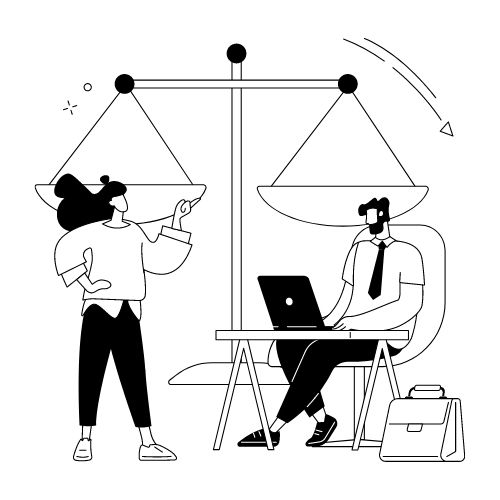Takeaways From the FedEx and Target ADA Accessibility Lawsuits
Updated: March 26, 2024
How the ADA Impacts Online Video Accessibility [Free White Paper]
Accessibility lawsuits can tell us a lot about what makes an organization accessible to both employees and customers.
Two ADA-based lawsuits against international shipper FedEx and retail giant Target highlight the importance of prioritizing accessibility in both physical and digital spaces. In this blog, we will provide a high-level overview of each case and the takeaways that organizations should consider.
EEOC & NAD vs. FedEx

The suit was filed in response to 19 separate charges filed throughout the country, all citing discrimination against d/Deaf and hard of hearing workers by FedEx Ground. The bases of these charges were that FedEx Ground violated the ADA by failing to provide American Sign Language (ASL) interpreters or closed captioning for training videos, and refused to provide necessary modifications to sound-sensitive equipment.
In mid-2015, the National Association of the Deaf (NAD) stepped in to support EEOC. In 2016, FedEx’s motion to dismiss that case was denied by a federal judge who stated, “FedEx Ground’s alleged failure to accommodate deaf and hard-of-hearing employees and applicants is the heart of the case.”
In 2020, the EEOC announced FedEx would settle as part of a two-year Consent Decree, in which FedEx Ground Package System, Inc. will pay $3.3 million. The settlement additionally requires FedEx Ground to:
Takeaways from the FedEx Accessibility Case
- The larger your organization’s revenue, the more likely you are obligated to provide reasonable accommodations that are in direct proportion to the size and needs of your workforce.
- It’s a good idea to keep accessibility in mind as your organization grows, and to “bake in” accessible features to things like new products, programs, and policies.
NFB vs. Target
In 2006, the National Federation of the Blind (NFB) sued Target Corporation in a precedent-setting case over its public retail website. The NFB claimed that blind people were unable to access much of the information on Target’s site and could not purchase anything independently.
Both sides reached a settlement in 2008. Target Corporation paid a large settlement fee, covered both sides’ legal costs, and agreed to make its website accessible to blind users.
Over the years, Target has worked closely with the NFB to ensure its website is accessible to blind consumers and is now considered a leader in web accessibility by the NFB.
Main Takeaways from the Target Accessibility Case
- The main lesson from this case is best summed up in a blog post by Jared Smith of WebAIM. He writes, “[T]he settlement amount is significantly more than what it would have cost Target to implement a high level of accessibility in the first place.”
- The outcome of this lawsuit demonstrates that it is wiser to consider accessibility in the early stages of design and planning than to ignore it or take a more reactive approach.
- This was a historical ruling because it was one of the first major cases that helped define the relationship between the internet and the ADA.
Learn more about how the ADA applies to online video accessibility:
Further Reading

Subscribe to the Blog Digest
Sign up to receive our blog digest and other information on this topic. You can unsubscribe anytime.
By subscribing you agree to our privacy policy.








